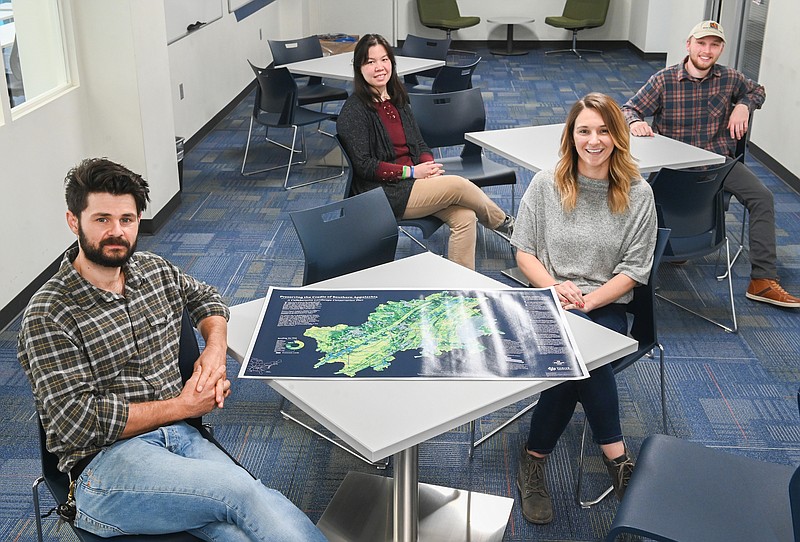Before air conditioning, some Chattanoogans built houses on the mountaintops so they could stay cooler in the summer.
It turns out that Southern wildlife adapt in much the same way.
Charlie Mix, director of Geographic Information Systems and the Interdisciplinary Geospatial Lab at the University of Tennessee at Chattanooga, explains how.
"Let's say you are a salamander. You might live in this tiny little niche environment at the bottom of a mountain," Mix said in an interview. "But then it gets warmer, and you have to go up the mountain to find the temperature that you thrive in."
Makes sense.
Mix and several students at UTC recently released a map they call "Preserving the Cradle of Southern Appalachia." It won the "Best Overall Map" award at the 2020 Tennessee Geographic Information Systems conference.
It's coded in shades of green to show places in a 16-county area of Southeast Tennessee, Northwest Georgia and Northeast Alabama where plants and animals thrive, and also areas where they are most vulnerable.
Southern Appalachia is known to be one of the most biodiverse, yet least protected, regions of the country. Only about 15 percent of land here has been protected by public purchase or restricted-use covenants, while conservationists say it would ideally be closer to 50 percent.
Among other things, the UTC map identifies "wildlife corridors," the wooded "highways" that wildlife use to move from one eco-friendly place to another.
Three years in the making, the map looks at those animal migration patterns and other markers of biodiversity to help conservationists and land planners make better decisions for growth and acquisitions.
"If you are a conservation organization and you have X dollars to spend on land investment, you want to find the best possible investment," Mix said.
Goals of the map project include protecting habitat, preserving rare species and water quality, and connecting people to nature.
The map is the work of the faculty and students at UTC together with the Thrive Regional Partnership, a Chattanooga-based sustainable development group that pushes for responsible growth in the region. Thrive launched the "Cradle of Appalachia" initiative to protect natural areas and wildlife habitat.
Rhett Bentley, director of communications with Thrive, said the map is a tool to help planners and conservationists pinpoint some of the most biodiverse - and vulnerable - pockets of land in the region.
"This gives [people] something to put a finger on and say, 'I knew that [place] was special," she said.
Mix added, "If you take the city of Chattanooga, it's diverse, there's fun stuff to do and its a great place to live. But if we didn't have highways to transport people and goods through our city, it would die. The same concept applies to nature."
He said the map points out undeveloped land parcels of 100 or more acres connected by these wildlife passages to consider for purchase by nonprofit land conservancies.
Areas highlighted for attention by the map include parts of Walden's Ridge, the Cumberland Plateau, Lookout and Pigeon mountains, the Hiwassee River area and the Southern Blue Ridge Mountains.
With eco-tourism tied to outdoor adventure sports as a major driver of local tourism in the Chattanooga area, maps like this can help preserve natural assets.
Some maps point you to where you're going, while other maps, it seems, are signposts to the future.
Contact Mark Kennedy at mkennedy@timesfreepress.com.
